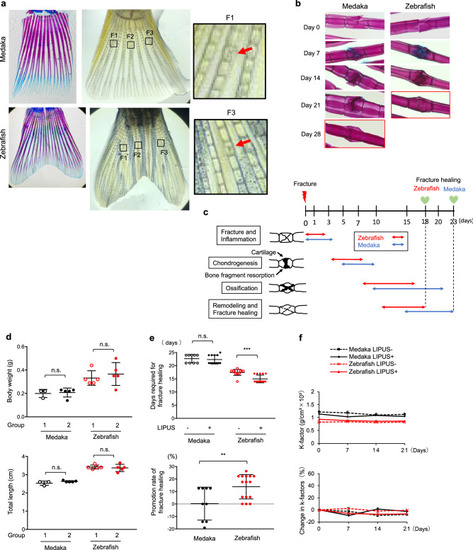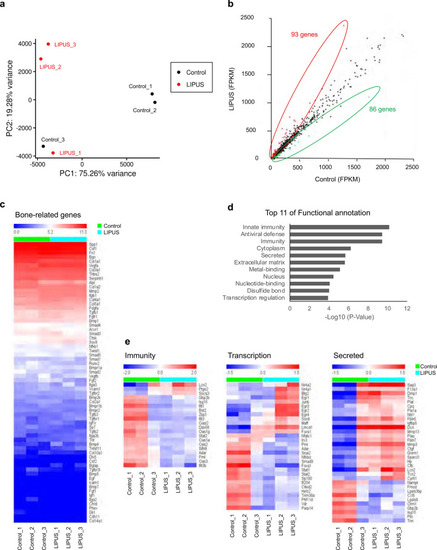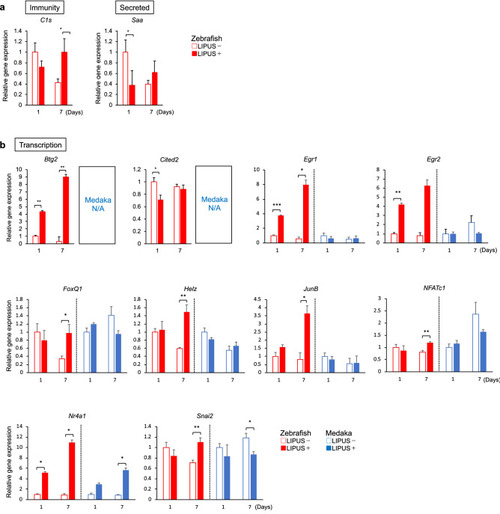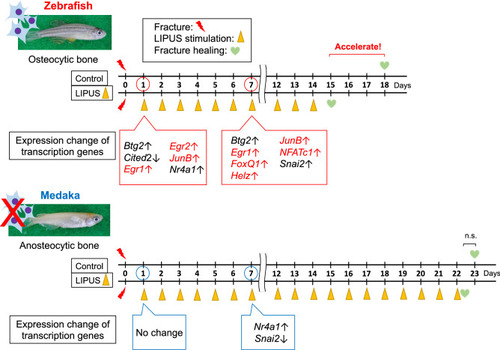- Title
-
Osteocytes as main responders to low-intensity pulsed ultrasound treatment during fracture healing
- Authors
- Shimizu, T., Fujita, N., Tsuji-Tamura, K., Kitagawa, Y., Fujisawa, T., Tamura, M., Sato, M.
- Source
- Full text @ Sci. Rep.
|
The effect of LIPUS treatment on fracture healing in medaka and zebrafish ( |
|
RNA-seq analysis of LIPUS-stimulated MLO-Y4 cells. ( |
|
Measurement of candidate gene expression in LIPUS-treated zebrafish and medaka. Zebrafish and medaka tail bones were fractured and stimulated with LIPUS for 20 min every day. On days 1 and 7 after the fracture, RNA was extracted from the fin rays. ( |
|
Schematic summary. Schematic representation of the LIPUS effect on the fracture healing and associated transcription factor genes in zebrafish which comprise osteocyte-containing bone and medaka which comprise osteocyte-lacking bone. The photographs of zebrafish and medaka were taken by M. S. |




